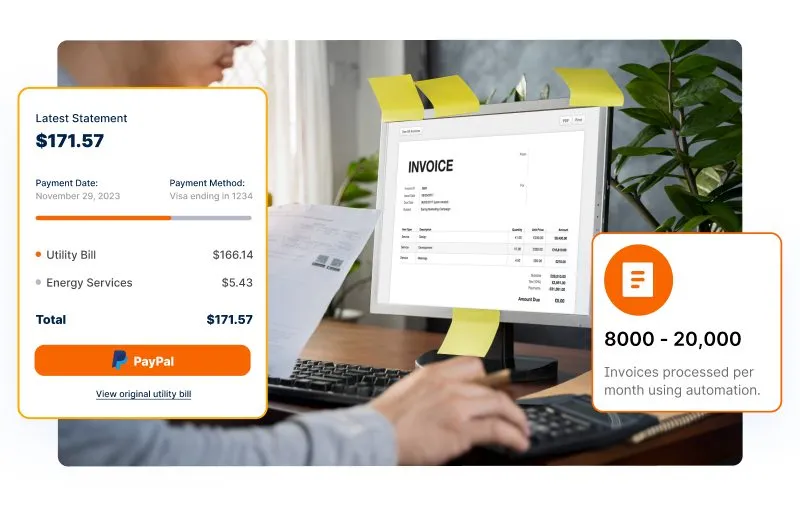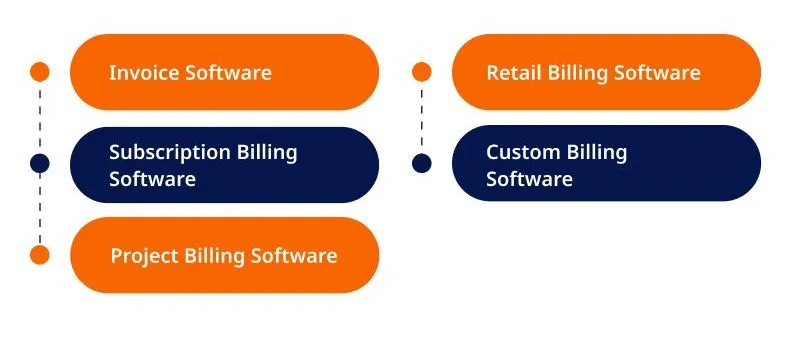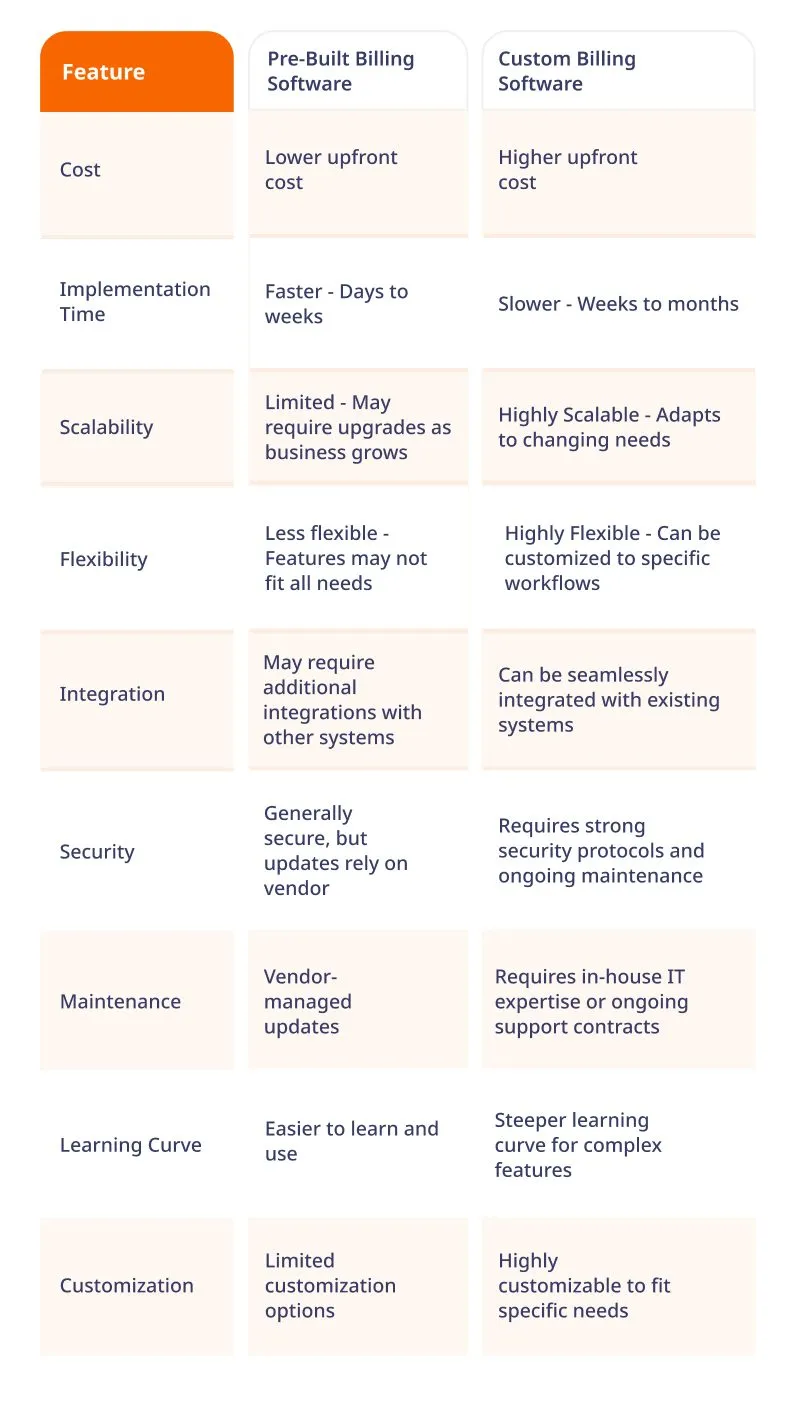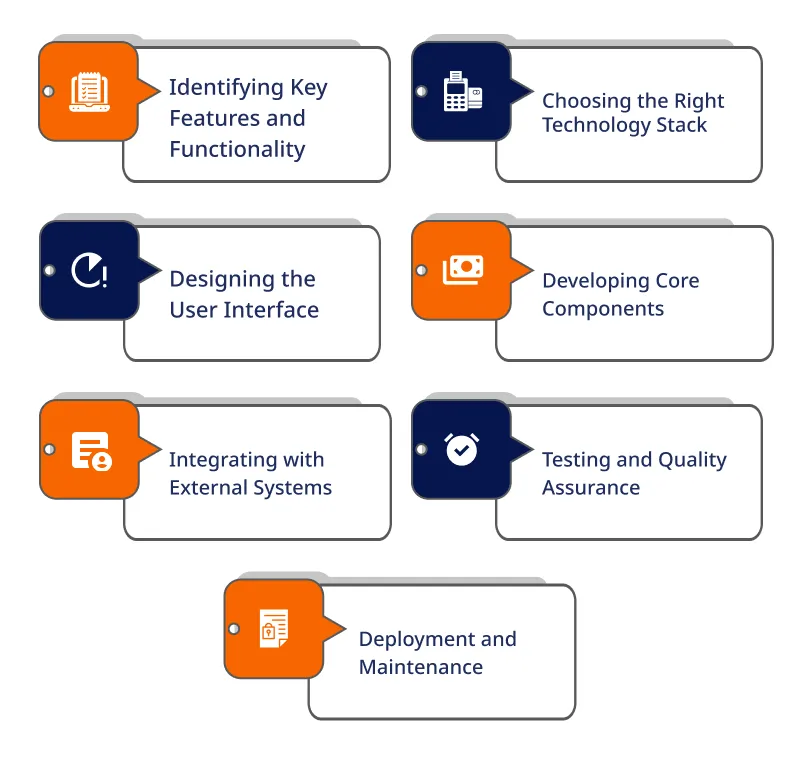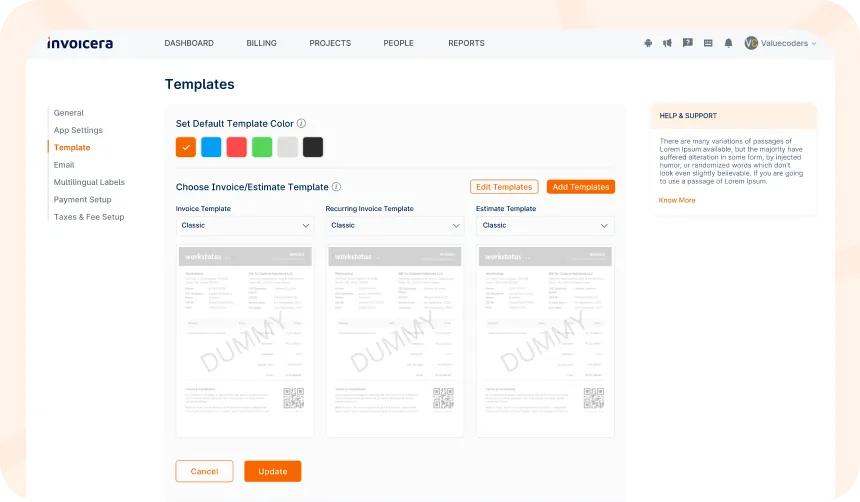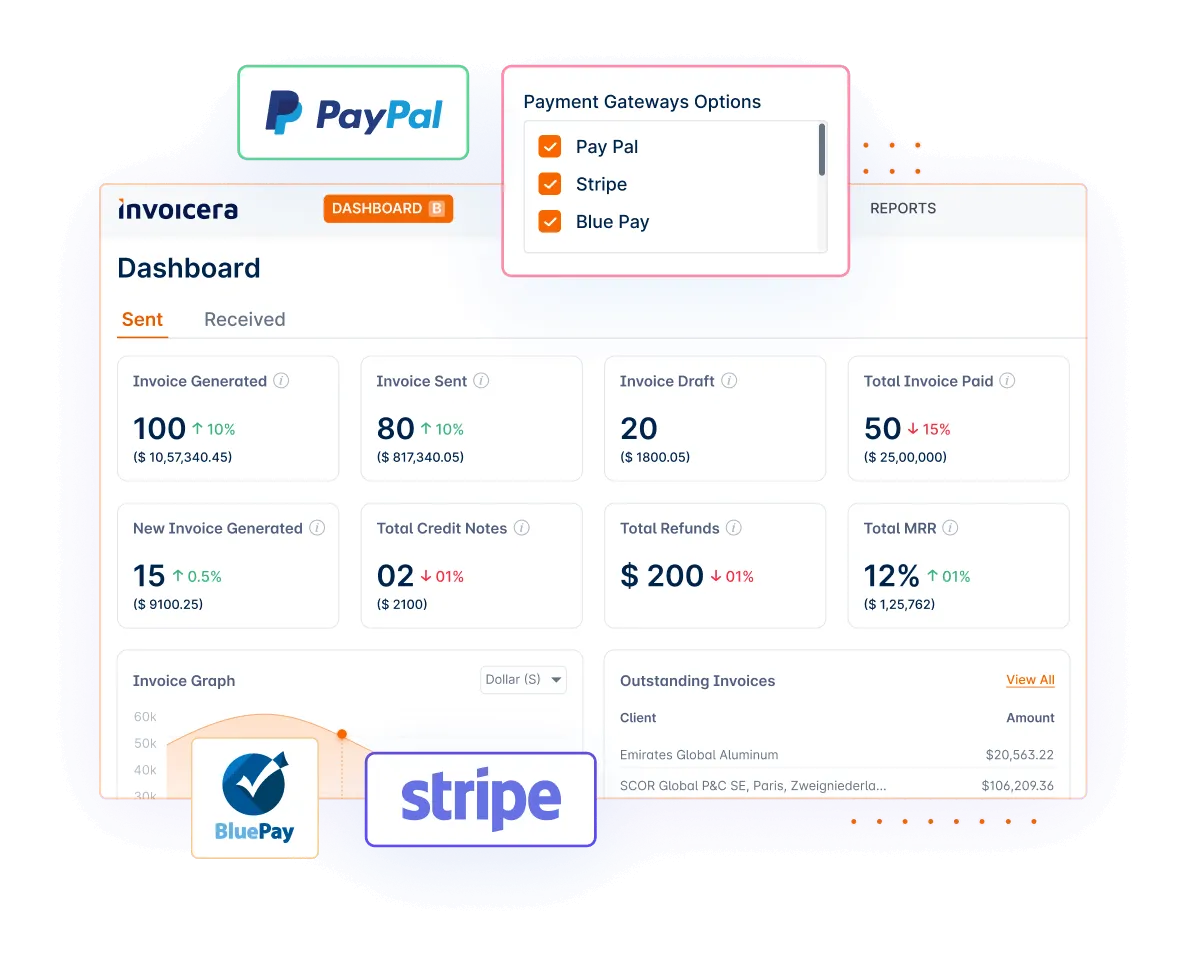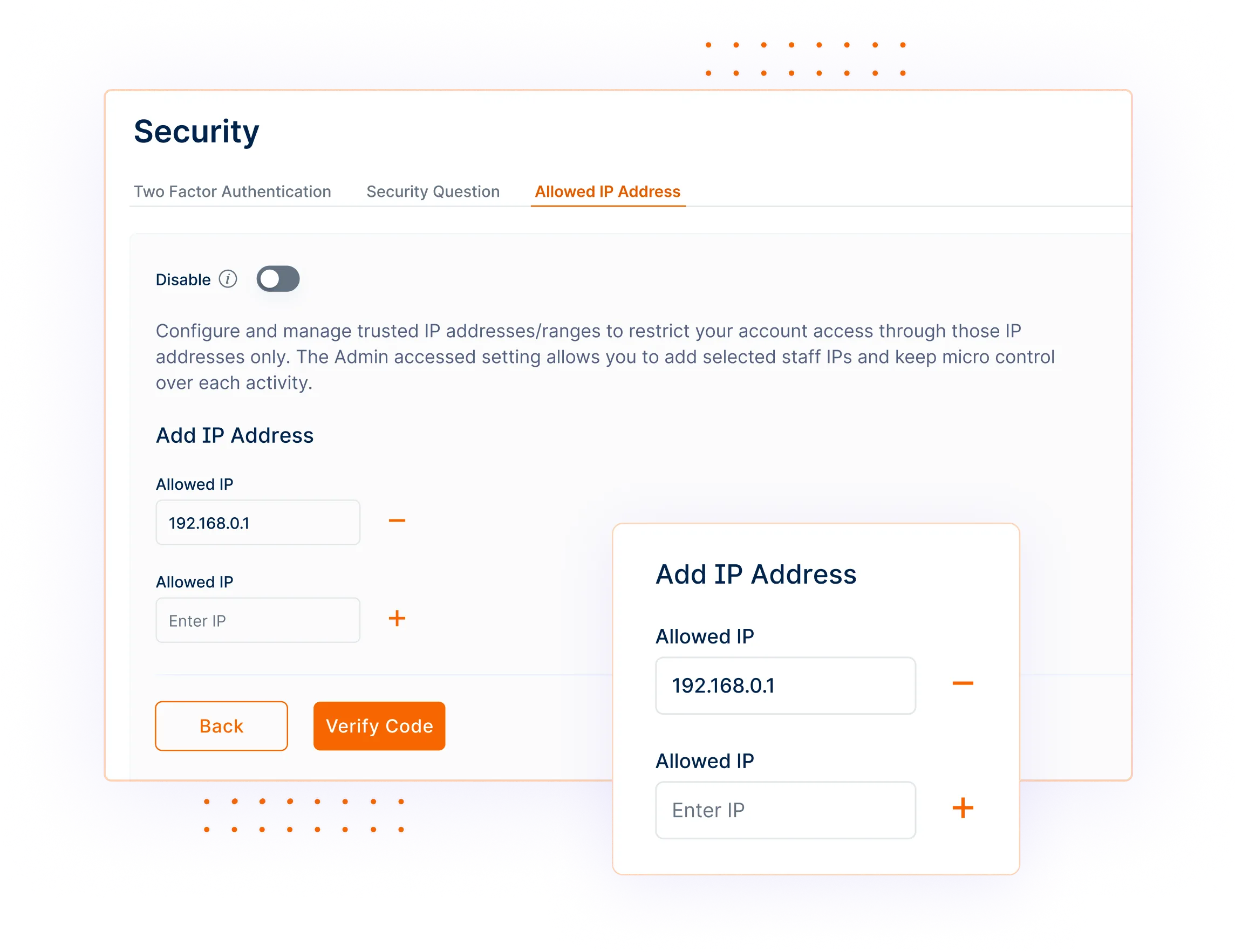Introduction
Handling the billing and invoicing process can be a massive challenge for companies with a complex pricing structure, different sources of income, or many customers.
Manually monitoring invoices, payments, and subscriptions can lead to human error, delays, and customer dissatisfaction.
A study reveals that the average cost of a manual invoice process is $15 and may go higher because of errors and inefficiencies.
Picture a situation where you manage a profitable SaaS (software-as-a-service) product with hundreds and thousands of subscribers. Manual invoice creation, payment tracking, and general recurring billing can quickly become a nightmare, with lost revenue, upset customers, and myriad resources consumed.
This is when you need billing software that is up to the task and customized to your company’s needs. By automating and simplifying all billing procedures, business owners can save time, minimize errors, and improve overall process efficiency, enhancing customer satisfaction and profitability.
What Is A Billing Software?
Billing software automates and controls all transactional processes, including business billing and invoicing. It simplifies preparing, delivering, recording, and chasing invoices, along with other tasks such as handling payments and generating reports. Billing software can significantly reduce the time and effort involved in manual billing, helping companies shift their focus to their critical operations and growth.
Billing software is a single management point for customer information, billing, payment processing, and report generation. It eases the billing process by automating many features, such as issuing invoices, calculating taxes and discounts, and notifying late bill payments.
Different Types Of Billing Software
The billing software can be a real time saver for all business sizes. It automates invoice creation, chases receivables, and simplifies your financial management. Yet, with such many opportunities available, how do you decide to settle for one? The good news is that these are types of billing software that can be customized to meet almost any business need. Here’s a breakdown of some common types:
- Invoice Software: It lets you generate invoices with a branded look easily and quickly, using your company logo and branding. In addition, you can track the payment status of your invoices (sent, paid, overdue) and even send automated payment reminders.
- Subscription Billing Software: Ideal for businesses with recurrent revenue, such as subscription services or memberships. This software establishes an automatic invoice-sending and payment receipt process at periodic intervals. Moreover, it can deal with different subscription tiers and maintain client accounts.
- Project Billing Software: Ideal for companies that charge clients based on completed projects or achieved milestones. This software enables you to monitor the duration of assignments, manage costs, and prepare invoices according to your previously established rates.
- Retail Billing Software: Tailored to help businesses that deal directly with customers selling products. The software can integrate with point-of-sale (POS) systems to perform inventory management, sales tax calculation, and receipt generation.
- Custom Billing Software: Willing to customize for your unique business model? Custom billing software suits unique areas of your business the best as it can be adjusted according to your specific needs. This could be an excellent choice for complicated companies in terms of invoicing or providing various customized services.
Features Of Custom Billing Software
A business needs-based billing software provides a wide variety of features that are unique to each business. Here are some standard features:
- Customizable pricing models: Provide insight into the complex payment methods, including one-time payments, recurring subscriptions, usage billing, etc.
- Automated invoicing: send invoices based on pre-defined milestones or invoice events.
- Payment gateway integration: Seamlessly linked with leading payment gateways of the industry, enabling customers to pay invoices directly through the software.
- Subscription management: Handling subscription sign-ups, cancellations, upgrades/ downgrades, and renewals become smooth activities.
- Tax calculation: Automatically calculate and apply taxes depending on location and local tax laws.
- Reporting and analytics: Develop comprehensive reports and insights on the billing data, revenue flow, and customer behavior.
- Customer management: Maintain a centralized database that contains customer information, such as billing history and communication records.
- Multi-currency support: The billing support for customers with different currencies due to their location or customer preferences.
- Customizable branding: Brand your invoices, emails, and other customer-facing documents using your company’s trademarking elements.
- Role-based access control: Provide users with different access levels and permissions according to their roles and responsibilities in an organizational setup.
How To Create Custom Billing Software
Developing a unique custom billing software solution that fits the peculiarities of your business is a multi-layered process that contains the planning phase, the phase of implementation, and the maintenance phase. Here’s a step-by-step guide to help you navigate the journey:
1. Identifying Key Features and Functionality
Defining the core features and functions the billing software must integrate before heading into the development stage is essential. Seek stakeholders’ views with feature request tools, evaluate your business processes, and determine customers’ needs.
Central characteristics are billing, payment processing, subscription management, reporting, and customer management. Clearly outlining these requirements will serve as a roadmap for the custom software development team and ensure that the final product meets your expectations.
2. Choosing the Right Technology Stack
The suitable programming languages, frameworks, and databases are vital toee the speed, scalability, and maintainability of your project. Popular choices include programming languages like Java, Python, or Node.js, frontend frameworks like React or Angular, and databases like MySQL or PostgreSQL. Additionally, leveraging robust hosting solutions is crucial. Reliable hosting services, such as Hostinger’s Cloud Hosting, offer enhanced performance, security, and scalability, making them an excellent choice for supporting the infrastructure of your custom billing software. This ensures your application runs smoothly under various loads.
Consider your development team’s expertise, requirements, and technology roadmap to make the right system architecture decisions.
3. Designing the User Interface
A properly designed and easy-to-use user interface (UI) will likely increase the experience level for both customers and internal teams. Work with designers to create wireframes, mockups, and prototypes that match your vision.
It is vital to make the UI consistent, appealing, and device-independent. Availability and usage should be the first consideration.
4. Developing Core Components
Now, with the structure in place, we see the implementation of the core components of your billing software. This suite contains modules for invoicing creation, payment processing, subscription management, and reporting.
Develop standardized coding practices, modularity, and scalability to sustain the system’s longevity and extendibility. Leverage existing libraries and frameworks to speed up development and adhere to industry standards.
5. Integrating with External Systems
Today, in business, no matter which industry you are in, integrating your billing software with third-party cloud services becomes essential. This could be, among many other things, a payment gateway provider (e.g., Stripe, PayPal), tax calculation APIs, accounting software, and other business-critical systems, for instance.
Make sure that exchange and communication between systems are safe and that they all give your users connected and seamless service.
6. Testing and Quality Assurance
Thorough testing is a vital part of the development process, and it is not advisable to skip this step. Develop a solid testing approach encompassing unit, integration, and end-to-end testing.
Conduct complete testing to find and fix bugs, validate data integrity, and verify all functionalities before deployment. Continuous testing and quality assurance practices will help catch issues early and maintain a high-quality standard.
7. Deployment and Maintenance
When you finally have your software fully developed and tested, it’s time for you to deploy it into a live production environment (on-premises or in the cloud). Establish auditing, backup, and data recovery processes to propagate business continuity and data integrity.
Remember that software development is an incremental process; keep maintaining and updating the software to address security loopholes, bugs, and other requested features based on emerging business needs and market trends. Engaging experienced software developers can ensure these updates are efficiently implemented and aligned with industry standards.
During the development process, stakeholders, developers, and end-users should collaborate. Consistently collect user feedback, process usage data, and develop and enhance the software utilizing information from actual usage and explorations.
Designing custom billing solution software is a considerable investment. However, it could significantly impact increased efficiency, customer satisfaction, and business expansion. You can develop a personalized solution by adhering to a systematic approach and employing a team of skilled developers and domain experts. This solution will work well with your current systems and adapt as your business needs change.
Cost To Build Billing Software
The cost of developing custom billing software may be either small or extensive, depending on the technological stack, the features’ complexity, and the development team’s level of expertise.
Here’s a breakdown of potential costs:
- Development team: Hiring a team of developers, designers, and project managers is likely the most expensive item on the budget. Partnering with software solutions companies can help streamline costs and provide access to specialized talent. The range can vary from $50 to $200 per hour, such as in different places or with varying levels of experience. So, consider working with a nearshore software development company to reduce high costs and have a quality platform
- Third-party integrations: Integrating the payment gateways or tax calculation services with other external systems can require additional costs or licenses.
- Hosting and infrastructure: The costs of hosting this billing software might fluctuate depending on whether it’s based on cloud services, dedicated servers, or scalability options.
- Ongoing maintenance and support: The product’s development is just the first part of the process. The next step is maintenance, involving bug fixes, updates, and ongoing support.
- Project management and quality assurance: Efficient project management and overall testing are vital to guarantee the success of the implementation.
A simple billing software with basic features costs between $20,000 and $50,000. Despite this, more straightforward solutions with basic functionalities and integration can cost from $50,000 to $200,000 or more.
It is imperative to analyze your business’s particular needs, growth plans, and budget to decide how large your custom billing software project should be.
Invoicera: Best Custom Billing Software
Invoicera is a well-known name in custom billing software solutions. Businesses can enjoy a faster and more efficient billing and invoicing process with its customizable dashboard.
With 19 years of industry experience and a team of experienced developers, Invoicera has proven to be the best choice for companies that need a uniquely designed invoicing system.
Caters to Unique Business Needs
The standout feature of Invoicera is its ability to deal with the unique demands of businesses if your business has an unusual pricing model, multiple revenue streams, or specific integration requirements. The team works closely with their clients to understand their processes and ultimately develop a tailored solution to their needs.
Ground-Up Custom Development
Invoicera ensures that it meets your every expectation. Having features such as flexible pricing models, automated invoicing, and subscription management, this software is designed to solve all your billing problems.
Seamless Integration and Scaling
Invoicera fully comprehends the importance of integration and scaling. Its solutions are custom-built to connect your systems or platforms without stressing your workflow. This scalable software can grow with and adapt to your business as it expands and your needs change.
Securing Information and Making it Compliant
Invoicera prioritizes information security and compliance, using industry-standard security protocols to protect your billing data and keep it compliant. Security audits and updates are conducted periodically to provide the highest level of security and compliance with industry regulations.
Commitment to Quality and Ongoing Support
What distinguishes Invoicera from others is its position on quality and continuous technical support. The team continually collaborates with the clients to ensure the final result is top-notch. Moreover, Invoicera provides comprehensive training, documentation, ongoing support, and maintenance services. This ensures that your custom billing software remains a valuable asset for years.
Conclusion
Custom billing software is crucial to any enterprise. It requires proper planning and execution. However, the pros more than compensate for the struggle. Specialized software equips you with a custom solution addressing your pain points.
It simplifies processes, lessens the errors, and thus increases the effectiveness. With the correct methodology and a good team, you can develop a machine that grows with your business.
Invoicera is a leading provider of custom billing software solutions that can be tailored to your specific requirements.
Custom billing software is an investment with payback in the form of customer satisfaction and business prosperity.
FAQs
How do I know if I need custom billing software?
If your current billing system cannot handle your procedures or pricing models, custom software may be the solution. A personalized solution can be built to meet the complex needs of multi-currency, subscription, or usage-based billing.
Can I get my team training on the new custom software?
Absolutely. Many custom software developers also offer complete training and documentation. This equips your team with the ability to use the new system right out of the gate.
What if my business needs to change after the software is built?
That’s one of the most profound advantages of custom software like Invoicera – it can adapt to the dynamic needs of your business. The ability to add new features, integrations, and advancements as your needs evolve is offered over time.


